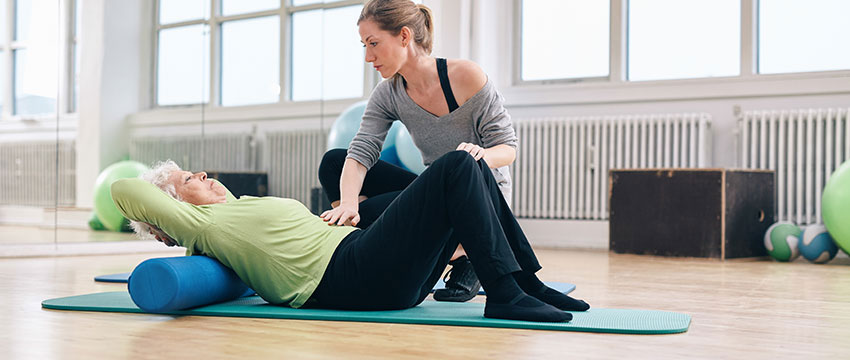Contrary to what your aching joints and muscles might indicate, exercises for back pain can help to strengthen and improve the flexibility in your back, and protect you from re-injury. Back pain, and specifically lower back pain, is one of the most common ailments affecting adults, causing lost productivity, time off work and visits to the doctor’s room. At Sirius Health we look forward to offering our patients a holistic approach to wellness and offer a number of treatment options for back pain relief. Let’s take a look at some simple but effective exercises that you can integrate into your fitness routine.
Lower back pain is incredibly common, and in many cases it is able to self resolve without intervention or treatment. But this often means loss of fitness as you play the waiting game – waiting for your injury to improve so you can get back to your regular lifestyle.
By taking an active approach to your fitness and working with a healthcare professional like a physiotherapist for back pain relief, you can continue to exercise through your injury, maintain your fitness and minimise your chances of the injury recurring in the future.
Why Is Exercise Important For Back Pain Relief
When you are in pain exercise might not seem like a logical addition to your daily routine, but it’s actually essential to carry on exercising, to maintain strength and flexibility. If you don’t do this your muscles will atrophy and any existing injury may be exacerbated. Exercise improves blood flow and circulation to injured areas, which may help to speed up healing.
Exercise is important for your whole body and while you may have weaker back muscles, you do need a strong core and strong leg and arm muscles to give your back the necessary support.
Why it’s important to collaborate with health professionals when you have back pain
Working with a physiotherapist will ensure you develop a customised exercise and fitness plan that works with your strengths and weaknesses (quite literally!). A professional will be able to take your needs into account when creating an exercise programme that takes cognisance of your injuries and strengthens the muscle groups that support your back muscles.
Overuse and mis-use of muscle groups can make back pain worse and result in longer term injuries that take longer to heal. All exercises need to be modified for you, your body and your strengths and weaknesses.
If you work with a healthcare professional you can set fitness goals, and follow a customised approach to achieving them. Remember: you need to challenge yourself in order to improve and get stronger but it can’t come at the risk of injury.
Stretching Exercises For Back Pain
Any exercise routine should be started off with the right stretching exercises that will warm your muscles up. One example is toe-to-chest stretching, whereby you would lay flat on your back, and pull one leg at a time to your chest, while keeping the other leg stretched straight out.

Yoga postures like cat and cow stretches are great to ease the body into movement and give you an indication of where you might be experiencing tightness and tension, leading to back pain. Cat and cow stretches are great for easing tension in the back and warming your muscles up.
If getting to the ground is a challenge for you, that’s also okay – your physiotherapist or healthcare practitioner would be able to show you modifications that would require you to stay in a seated position.
Pelvic Tilts And Bridge Exercises For Back Pain
Pelvic tilts are known to release tension in the back muscles and keep the back supple and flexible. They are also a good gateway exercise to performing bridges.
Bridges can be very useful because they build the gluteus maximus, the largest muscle in the body. The gluteus maximus is really important because of the support it provides to the back, in carrying so much of your body weight and making it stronger benefits the back.
What Not To Do For Back Pain Relief
Not all exercises are created equal when you’re in pain – and that’s why having a physio or healthcare practitioner on your side is a real benefit when you need back pain relief. Until you have achieved a health and fitness milestone, there may be exercises you should actually avoid. Some examples of exercises that are not ideal for back pain and should be avoided include:
Toe touches
Reaching down to touch your toes, and reaching back up again may put too much strain on the lower back area and can cause an injury to flare up.
Sit ups and stomach crunches
It is true that sit ups and stomach crunches can help to build your core strength which is virtual for building strength in your back but they can also aggravate an existing lower back problem.
Leg lifts
While leg lifts can be hugely beneficial in an exercise programme they are not the best choice for people who are nursing back injuries and should be avoided until later in your exercise programme. By contrast, however, lateral leg lifts may be beneficial in your exercise programme because the weight and pressure is moved from the lower back to the pelvis. This means you can strengthen your legs without putting undue pressure on the injury in your lower back region.
If you are tired of injuries and want to try some exercises for back pain relief, we’d love to hear from you. Please contact our practice for an appointment: (02) 9884 9300.




